ISRO is preparing for the launch of Chandrayaan 3. With the primary objective of achieving a successful landing and rover deployment, the mission aims to explore the lunar surface through essential scientific studies for future purposes.
A THARIQ, PALAKKAD
JULY 13, 2023
Man has always been intrigued by the heavens. Civilisations, since antiquity, have undertaken efforts to investigate and uncover the mysteries comprising the universe.
The Holy Quran presents the cosmos and its components, especially the celestial bodies, as a sign of God’s existence and invites its adherents to study and explore the universe. The Holy Quran states:
“He has constrained to your service the night and the day and the sun and the moon; and the stars too have been constrained to your service by His command. Surely in all this, there are signs for a people who make use of their understanding”.[1]
The Holy Quran’s repeated exhortations to study the universe have prompted Muslims to conduct extensive research on this field, particularly during the Golden Age of Islam between the 8th and 13th centuries. Many Muslim scientists of this era have acknowledged the Holy Quran as the source of their motivation.
Another Quranic verse says:
“O company of jinn and men, if you have the capacity to penetrate beyond the confines of the heavens and the earth, by all means do so; but you cannot do so except with authority”.[2]
One interpretation suggests that this verse refers to the future development of rockets and space shuttles that will be used to explore the heavenly bodies.[3]
Over the past six decades, significant progress has been made in space exploration through both manned and unmanned missions providing detailed insights into the solar system. The latest among them, the Chandrayaan 3 mission by the Indian Space Research Organization (ISRO), is set to be launched tomorrow. The mission is highly anticipated and is believed to be a major step towards the colonisation of the moon.
The Chandrayaan Programme
Initially proposed in 1999[4], India’s lunar mission took shape four years later when then-Prime Minister Atal Bihari Vajpayee officially announced the Chandrayaan project, signifying the start of a remarkable journey[5]. The first mission, Chandrayaan 1, launched in 2009, featured an orbiter and a Moon Impact Probe (MIP)[6]. It played a vital role in imaging and mapping the lunar surface and led to the discovery of water on the moon. While the mission successfully accomplished most of its objectives, it encountered technical challenges that resulted in the premature termination of its operations[7].
The second phase of the project, Chandrayaan 2, was initiated in 2007 as a joint effort between ISRO and the Russian Space Agency, Roscosmos[8]. However, it transitioned into an independent project in 2015 due to challenges faced by Roscosmos in meeting the project’s timeline. The mission aimed to continue the studies performed by Chandrayaan 1 and introduced a rover to enhance its capabilities. Chandrayaan 2 was launched on July 22, 2019. On September 6, following a 46-day journey and a series of orbit-raising manoeuvres, the orbiter released the lander, carrying the rover, to the lunar surface. But the mission was unsuccessful due to a software glitch, resulting in a crash landing[9].
Although India’s endeavour to become the fourth nation to successfully land a rover on the moon failed, the mission proved to be inspiring. As July marks the fourth anniversary of the mission, the launch of the next phase, Chandrayaan 3, is underway. It is scheduled to launch on July 14 from the Satish Dhawan Space Centre in Sriharikota. Unlike its predecessor, this mission will solely consist of a lander and a rover, omitting an orbiter component[10]. The mission is projected to have a budget of Rs 615 crores[11], and the lander and orbiter are anticipated to function for a duration of 14 Earth days[12].
The ambitious third mission
With the primary objective of achieving a successful lunar landing, Chandrayaan 3 mission will be launched using the GSLV Mark 3 rocket into an elliptical orbit of 170 x 36,500 kilometres[13]. Through orbit-raising manoeuvres, the onboard engines will enable the spacecraft to escape Earth’s gravitational pull. The propulsion module of Chandrayaan 3 will then ferry the lander to the lunar orbit, where it will separate and release the rover onto the moon’s south pole, which remains unexplored to date (Figure 1). In ISRO’s own words, the south pole is of particular interest due to its permanently shadowed areas, which offer the possibility of investigating moon ice. Similarly, the presence of large craters at this region is significant, as they could provide insights into the composition of the early solar system.[14]
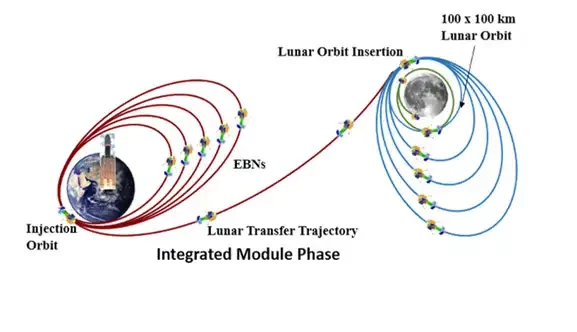
The lander module, equipped with four landing legs, is specifically designed for an independent, safe landing on the lunar surface and subsequent rover deployment. To facilitate the soft landing, the lander is equipped with four throttleable liquid thrusters with a force of 800 Newtons. It also has a Laser Doppler Velocimeter (LDV), which allows for precise measurement of the lander’s descent speed, removing the need for a fifth central engine, as seen in Chandrayaan 2. The lander also has sensors and hazard detection cameras to help with orientation and identify potential obstacles on its way.[15]
Once the lander touches down, a ramp will open, allowing the rover to be deployed onto the moon’s surface. The six-wheeled rover operates using solar panels and is equipped with two cameras for navigation and capturing lunar imagery. It also uses two antennas to communicate with the lander, which will then be sent back to Earth (Figure 2)[16].
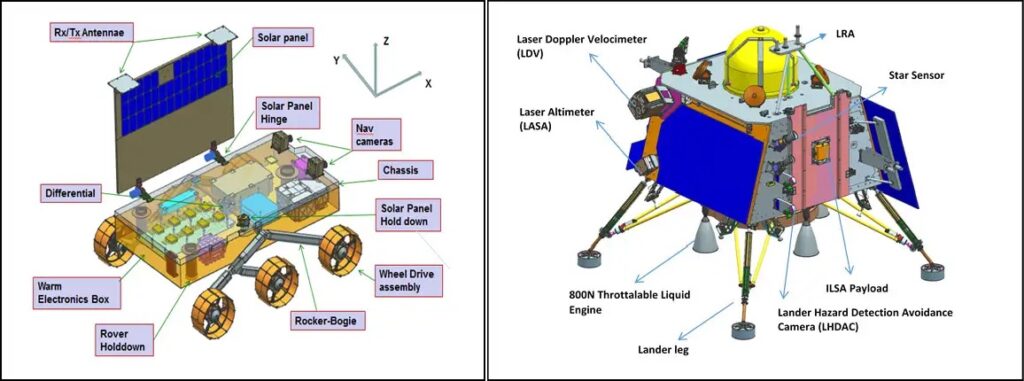
The lander module consists of four payloads.
The Radio Anatomy of Moon Bound Hypersensitive ionosphere and Atmosphere (RAMBHA): Located in the lander module, RAMBHA is specifically designed to measure the near-surface plasma density of the moon. This information is crucial as it helps optimise spacecraft design and operation to mitigate potential interference or disruption caused by plasma interactions. Additionally, it contributes to calculating the radiation risks posed to future astronauts[17].
The Instrument for Lunar Seismic Activity (ILSA): ILSA is another important payload in the lander module, developed jointly by the Physical Research Laboratory (PRL) and the Space Physics Laboratory at VSSC. Its primary function is to study the seismic activity of the moon, providing insights into moonquakes and analysing seismic waves to gain a better understanding of the moon’s inner structure[18].
Chandra’s Surface Thermophysical Experiment (ChaSTE): ChaSTE includes a probe equipped with thermal sensors capable of reaching a depth of 100 mm. It aims to study the temperature gradient of the landing site, providing valuable information about the moon’s thermal properties[19].
NASA’s Laser Retroreflector Array (LRA): LRA utilises sophisticated mirrors that can reflect back lasers sent from Earth, enabling scientists to make precise measurements of the distance between the Earth and the moon.[20]
Apart from this, the rover module of Chandrayaan 3 includes two additional payloads.
Laser Induced Breakdown Spectroscope (LIBS): The main purpose of LIBS is to conduct investigations to find the elemental composition of lunar regolith and pebbles on the moon’s surface. The instrument primarily consists of a pulsed laser source and a collection of optical lenses and mirrors.[21]
Alpha Particle X-ray Spectrometer (APXS): The APXS instrument analyses the lunar soil and rocks around the landing site to determine the presence of elements such as Sodium, Magnesium, Aluminium, Silicon etc. It achieves this by hitting the samples with suitable alpha particles (Helium nuclei) and measuring the resulting X-ray spectrum.[22]
Apart from mission propulsion, the propulsion module of Chandrayaan 3 also houses a payload called Spectro-polarimetry of Habitable Planet Earth (SHAPE). Once the lander module separates, SHAPE becomes operational and is dedicated to conducting spectroscopic and polarimetric studies of light reflected by exoplanets. Spectroscopy allows for the analysis of the gaseous composition of these exoplanets, while polarimetry facilitates the study of scatterers like aerosols and clouds. Together, these techniques contribute to the mapping of exoplanet atmospheres.[23]
If successful, India will become the fourth nation to successfully make a landing on the moon after the US, Russia, and China. It will also boost ISRO’s upcoming projects like Gaganyaan, which aims to put a manned mission into space. Moreover, pulling off a lunar landing mission for only half the budget of a Hollywood movie is an undeniable feat.
Tomas Hrozensky at the European Space Policy Institute in Vienna states, “We see the mission as a critical step toward future operations on the lunar surface, both manned and robotic”. He adds, “This achievement holds important technological and geopolitical dimensions, arguably without a dramatic impact on foundational scientific knowledge”.[24]
Conclusion
Studying the cosmos has always shown man his smallness compared to the existence of the unfathomably immense universe. As Carl Sagan puts it, astronomy is truly a humbling and character-building experience that reminds man of his insignificance in front of the immeasurable vastness that surrounds him[25].
Islam declares the purpose of human existence as acquiring the recognition of God. Hence, Muslims are duty bound to investigate the intricacies of the universe, as the Quran repeatedly emphasises the importance of delving into the mysteries of nature. It encourages man to acquire knowledge and explore the complexities of the cosmos, as it enhances our understanding and strengthens our faith in God.
This ambitious mission hence carries great fascination for me as a faithful. I hope Chandrayaan 3 sets a milestone in space exploration, successfully achieves its objectives, and prepares the stage for future scientific studies.
The author holds a master’s degree in physics from Chandigarh University.
END NOTES
[1] Holy Quran 16:13.
[2] Holy Quran 55:34.
[3] The Holy Quran with English Translation and Commentary v. 5, p. 3058
[4] This Day in History (22-Oct-2008) – India’s First Unmanned Lunar Mission, Chandrayaan-1, was Launched, Indian Academy of Sciences, 22 October 2015
[5] Prime Minister Announces Mission to Moon, Press release dated 16 August 2003, Press Information Bureau website
[6] India’s First Lunar Mission Finds Water on Moon, The Guardian 24 September 2009
[7] India’s First Moon Mission Ends Prematurely with Spacecraft Communications Failure, John Matson, Scientific American 31 August 2009
[8] India, Russia to Expand n-Cooperation, Defer Kudankulam Deal, Manish Chand, 12 November 2007 retrieved from The Internet Archive
[9] How Did Chandrayaan 2 Fail? ISRO Finally Has the Answer, Mahesh Guptan, The Week 16 November 2019 (updated)
[10] Chandrayaan-3: What Went Wrong with Chandrayaan-2, and How Its Follow-On Mission Is Different, Radifah Kabir, ABP News 6 July 2023
[11] Chandaryaan-3 to Be Launched on July 14: What You Should Know About India and ISRO’s Moon Mission, Hemant Abhishek, Zee Business 6 July 2023
[12] Chandrayaan 3, from the official website of the NASA Space Science Data Coordinated Archive
[13] Ibid
[14] India Shoots for the Moon with Chandrayaan-3 Lunar Lander, T V Padma, Nature 7 July 2023
[15] Chandrayaan-3, from the official website of the Indian Space Research Organization
[16] Ibid
[17] Lunar Near Surface Plasma Environment from Chandrayaan-2 Lander Platform: RAMBHA-LP Payload, G manju et al. Current Science 10 February 2020
[18] Instrument for Lunar Seismic Activity Studies on Chanderayaan-2 Lander, J John et al. Current Science 10 February 2020
[19] Chandra’s Surface Thermophysical Experiment (ChaSTE), from the website of Planetary Instrumentation Development Section
[20] Laser Ranging Retroreflector, from the official website of the NASA Space Science Data Coordinated Archive
[21] Laser Induced Breakdown Spectroscope on Chandrayaan-2 Rover: A Miniaturized Mid-UV to Visible Active Spectrometer for Lunar Surface Chemistry Studies, Laxmi Prasad A S et al. Current Science 25 February 2020
[22] Alpha Particle X-Ray Spectrometer, from the website of Planetary Instrumentation Development Section
[23] Spectro-Polarimetry of Planetary Atmospheres: Radiative Transfer Simulations and Instrument Concept, Bhavesh Jaiswal et al., 42nd COSPAR Scientific Assmebly held 14-22 July 2018
[24] India Shoots for the Moon with Chandrayaan-3 Lunar Lander, T V Padma, Nature 7 July 2023
[25] Pale Blue Dot: A Vision of the Human Future in Space, by Carl Sagan, Ballantine Books, September 1997 p. 13

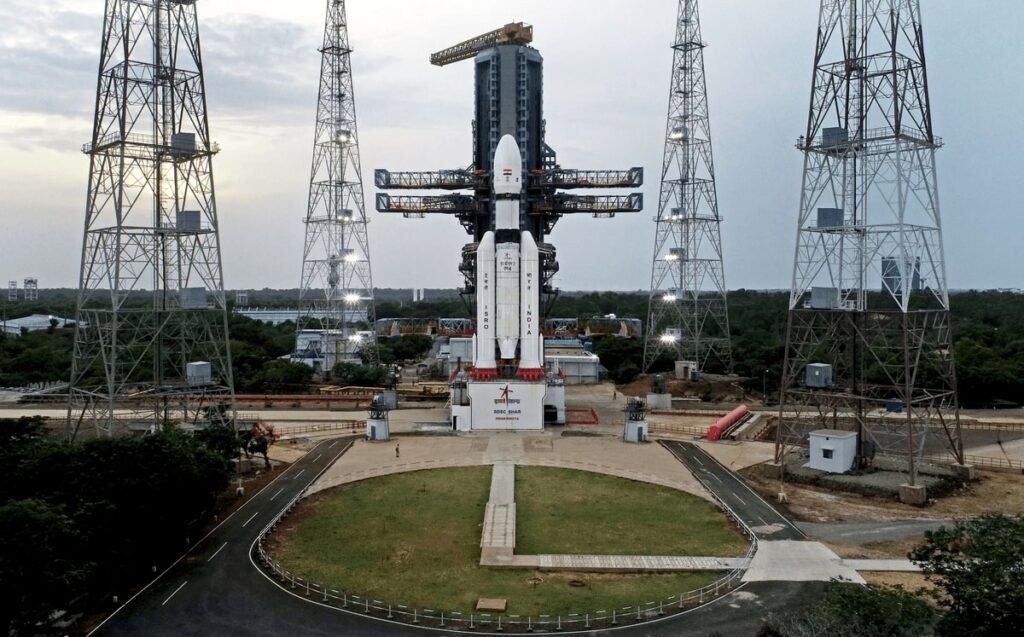
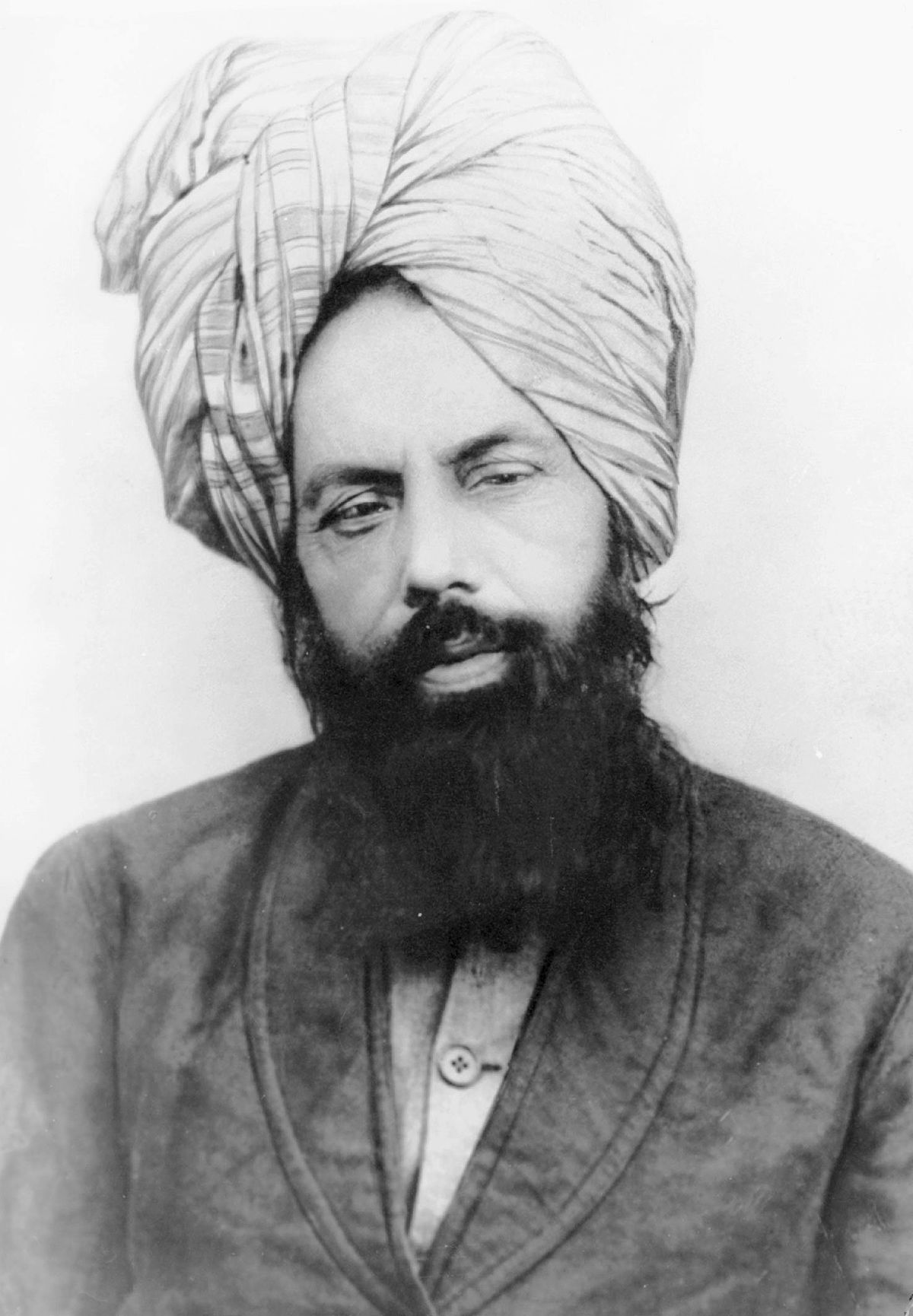
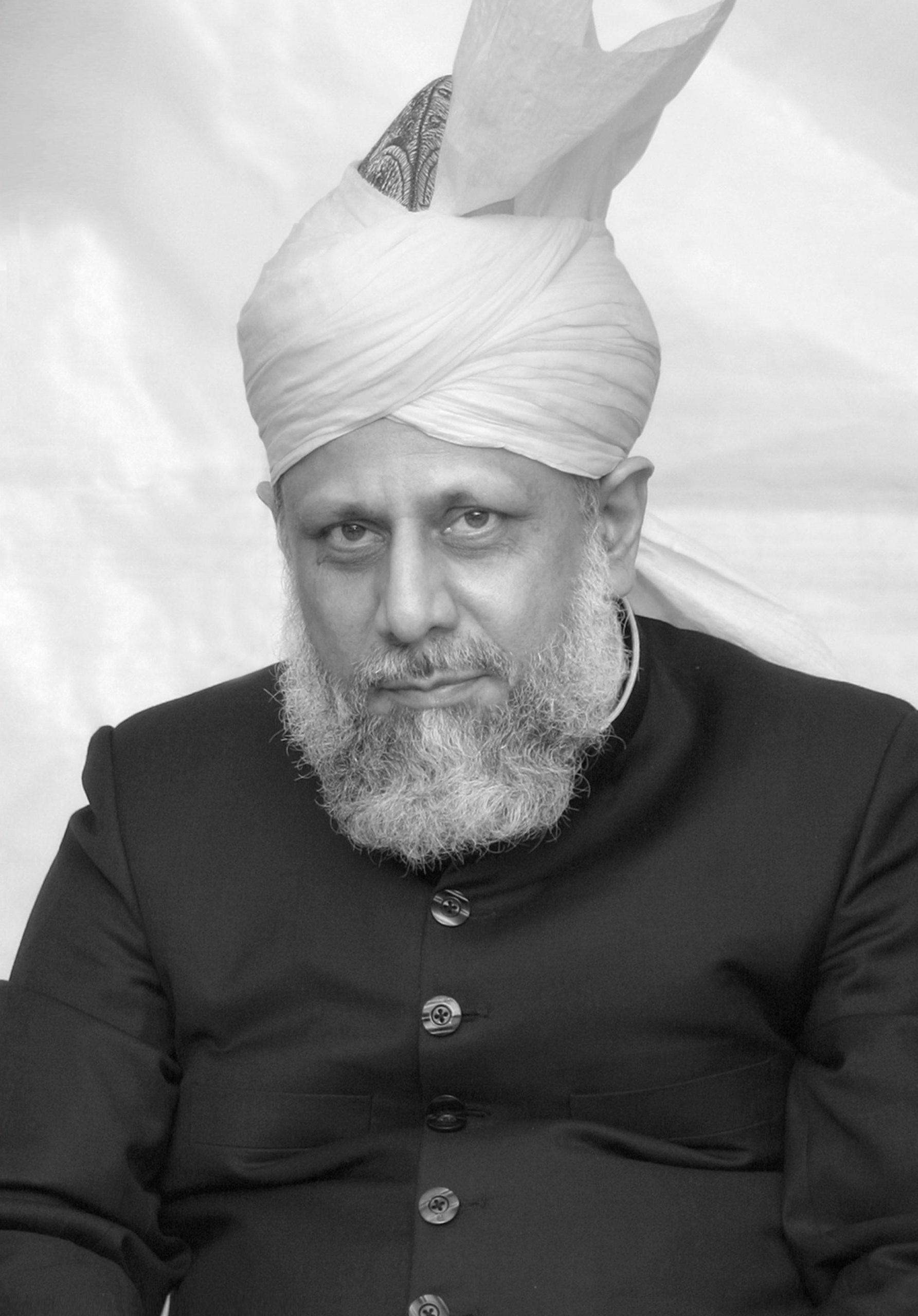






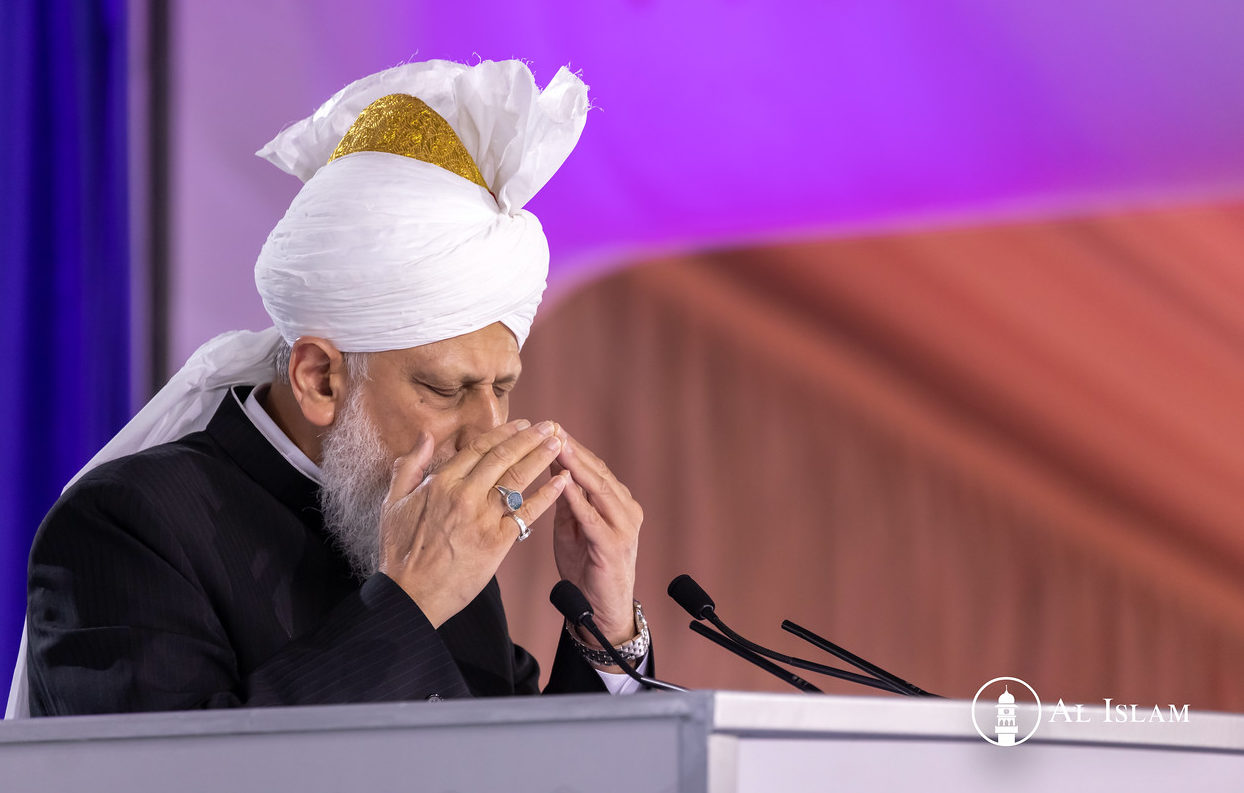

2 Comments
K V Reddy · July 20, 2023 at 3:19 am
Conclusion : Holy Quran is the source of knowledge in Astronomy and the guiding spirit and motivation for Moon missions of ISRO and NASA etc. Is this the author tries to tell ?
K N Mohammad Shafeeque · July 27, 2023 at 5:49 pm
Deeply studying the cosmos with utmost sincerity leads one to come to the conclusion that there should be a creator. Additionally, one can find many mentions in the Quran that conforms to our current knowledge of the cosmos. It is the challenge of the Holy Quran that the knowledge which will be explored in the future, will always bear testimony to the truthfulness of the Holy Quran.